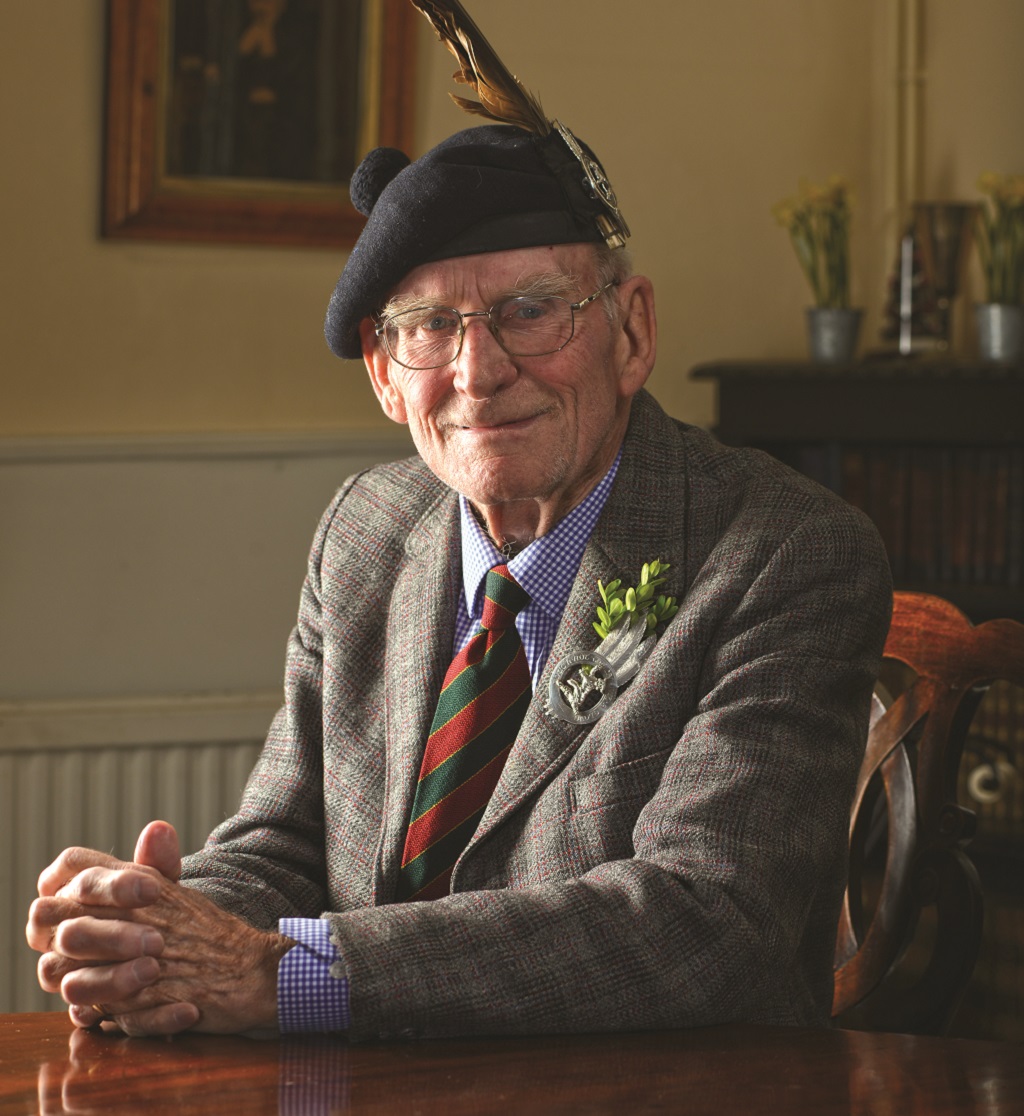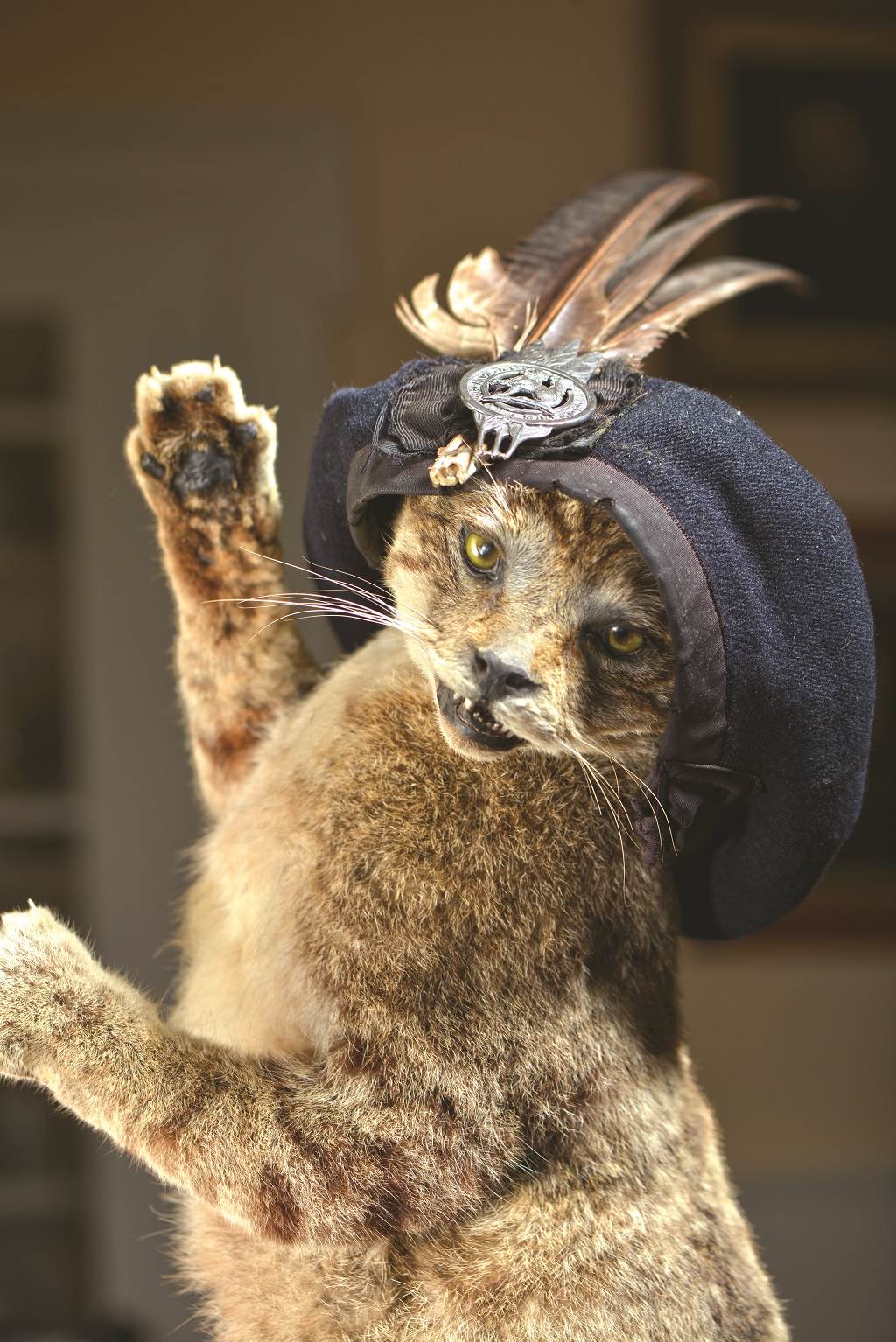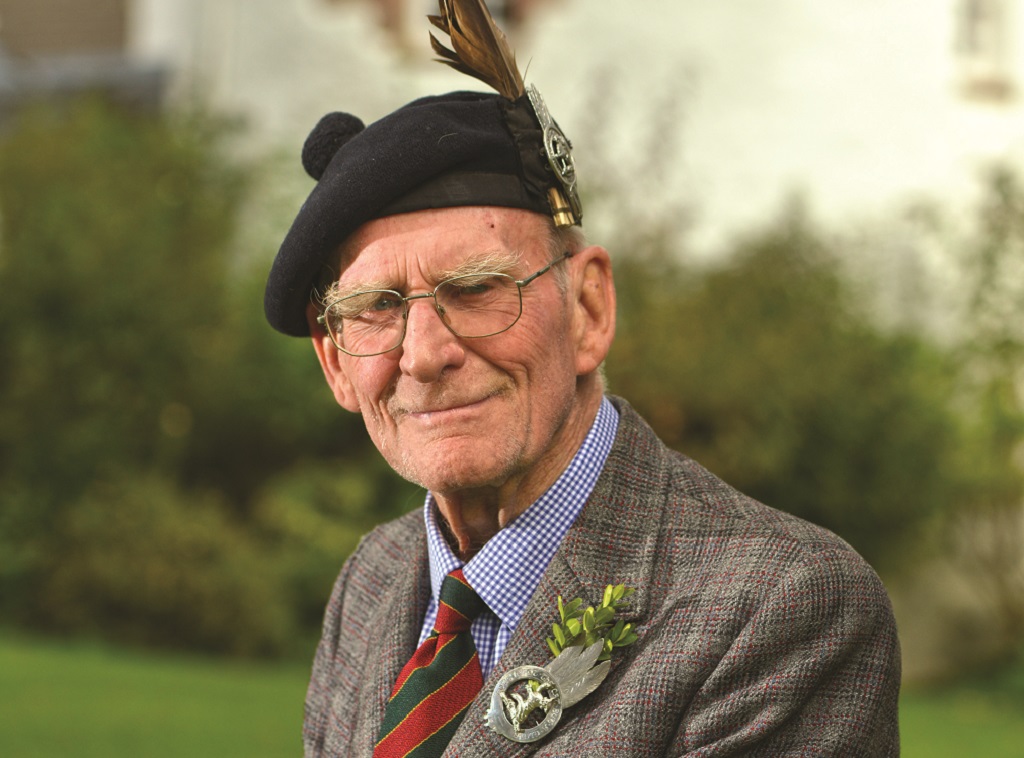There’s one word that echoes through the history of the Clan Macpherson, it’s a recurring theme for the Clan and the Clan Association and for Sir William Alan Macpherson of Cluny and Blairgowrie in particular.
Family – both recent and ancient – is very important to the 27th hereditary chief of the Clan Macpherson of Cluny.
Sir William has been chief of the Macpherson Clan for 47 years following the death of his father in June 1969.
Newton Castle has been his home since 1936, but the building which stands on the hillside of Knock-ma-har overlooking Blairgowrie and Strathmore has been in his family since 1787.
The impressive tower house with nine-foot-thick walls was purchased by Allan Macpherson on the recommendation of his cousin, the notorious James ‘Ossian’ Macpherson, whose portrait hangs in the dining room with the six generations of Macphersons to consequently reside at Newton.
You can find his painting hidden away behind a door due to allegations that he stole money from the current chief’s forbear Colonel Allan Macpherson. James is probably best known for publishing a cycle of Gaelic poems in 1760 that he claimed to have translated from an ancient Gaelic recitations and manuscripts.
Contemporary critics question the authenticity of the work and it is now thought that much of it is probably invention.

Sir William Macpherson at his home (Photo: Angus Blackburn)
The Clan Macpherson and the Clan Association hold their annual gathering at Newtonmore and Kingussie in the real heartlands of the clan on the first weekend of every August. This coincides with the Newtonmore Highland Games and sees clan members from across the globe march across the river Spey to the games.
In 2015, for the first time, the male Macphersons were joined by their female counterparts. In 2016, more than 370 people from as far afield as Spain, Australia, Canada and the USA came to the gathering to celebrate the 70th anniversary of the founding of the Clan Macpherson Association.
‘To get so many members from around the world in one place at one time was a great thing,’ says Sir William. ‘We had the most tremendous party.’
The association was started in 1946 by a group of clansmen in Scotland and is now one of the most active in the world with branches in Scotland, Australia, Canada, England, Wales, Africa, New Zealand and the USA.
The clan museum in Newtonmore is a treasure trove of relics and memories of great historical interest to Macphersons everywhere.
The museum opened its doors in 1952 and is run by the Clan Macpherson Museum Trust.
The name Macpherson, MacPherson or McPherson comes from the Gaelic Mac-a-Phearsain meaning ‘Son of the Parson’. A former chief of Clan Chattan was made Parson of Kingussie, and three of his grandsons were the first to be called Macpherson. There are around 30 associated family names that fall under the Macpherson umbrella including Gillies, which is one of the most prominent.
The clan’s main military activity centred on the ’45. The uprising saw Sir William’s predecessor and probably the best known Clan Chief in Macpherson history, Ewan Macpherson of Cluny, raise a battalion of 300-400 men who marched to Derby for the Jacobite cause. The company missed the battle of Culloden because they were detached and the next nine years saw Cluny hiding in the heather, protected by his clan, until he made his escape to France in 1754.
Ewan’s male line died out in 1966 and that’s when the chiefship transferred to Sir William’s father and the Blairgowrie line.

Sir William Macpherson lets this stuffed wildcat don his bonnet when he isn’t wearing it (Photo: Angus Blackburn)
Sir William’s personal crest depicts a wildcat, a symbol that he is particularly proud of (his chief’s bonnet sits proudly on the head of a stuffed wildcat in his hall when it is not gracing his own head). ‘The motto is touch not the cat bot a glove,’ he says. ‘It means don’t touch the cat that is without a glove. Or, beware of the cat with its claws unsheathed – don’t touch me or I’ll scratch your eyes out!’ The motto served as a warning to anyone who might consider interfering in Macpherson business.
The life of a clan chief has taken Sir William around the world, seeing him visit the USA and Canada on at least 30 occasions and Australia too.
But the chiefly life is only one string to Sir William’s bow. From 1944-1947 Sir William served in the Scots Guards and later the 21st Special Air Service Regiment (Territorial Army) for 15 years, which he commanded from 1962-1965. A keen rugby player, he captained London Scottish in 1954 and was president of the club from 1972-1979.
Educated at Oxford, he studied philosophy, politics and economics, before going on to study law. He was called to the bar in 1952 and became a High Court Judge in England and Wales, a role that saw him preside over some high-profile court cases including that of serial-killer Robert Black for the kidnapping, rape and murder of four girls in the 1980s.
The year after his retirement in 1996, Sir William received a phone call from the Lord Chancellor enquiring about his plans for the following day. ‘I told him that I planned to play golf,’ recalls the chief. ‘He said: “no you’re not, you’re coming to London to head up the Stephen Lawrence Inquiry”.’
The inquiry was ordered into the police’s handing of the murder of Stephen Lawrence in London in 1993. The Macpherson Report found that the Metropolitan Police were institutionally racist and contained 70 recommendations for reform of policing methods and criminal law.
‘Institutional racism is a phrase that has gone down in history,’ says Sir William. Sir William married Sheila McDonald Brodie in 1962 and the couple had three children. Sadly Sheila passed away in 2003. William’s son Jamie is next in line to take over the role of Chief of Clan Macpherson.
He currently lives in Melrose in the Scottish Borders with his wife Annie and three children. Jamie is a member of the Royal Company of Archers, just as his father was before him.
Sir William’s daughter, Annie, lives near Dunkeld with her husband Jerome and they have two children, a daughter who is studying History of Art at Cambridge and a son who is currently pipe major at Fettes. The couple also had an older son who died when he was 42, a time that Sir William recalls with great sadness.

Sir William Macpherson has been the chief of Clan Macpherson since 1969 (Photo: Angus Blackburn)
Today at the ripe old age of 92, Sir William still lives in Newton Castle with Lady Hilary Burnham, who he first met when she was only 16-years-old. ‘We met in the Meikleour village hall,’ remembers Sir William. ‘Then she pushed off and married the late Lord Burnham and I married Sheila. But following the death of our spouses we met up and Hilary has been here with me most happily for around ten years now.’
Sir William celebrated his 90th birthday in April with his many friends and all-important family in a marquee on the lawns of his beloved home, Newton Castle. He celebrated this milestone event with 90 balloons and an incredible and magnificently proportioned cake made in the exact likeness of the chief’s home by his daughter-in-law, who even took measurements of the castle to ensure it was perfectly to scale.
A keen fisherman and golfer all his life, Sir William still plays the odd nine holes with the help of a golf buggy. ‘In fact I was playing with someone at Rosemount course the other day and he asked me if I’d ever played the course before,’ says Sir William.
‘I told him that I’d been playing there for 80 years and I think it put him off his game. He didn’t win another hole after that.’ Incredibly the last time the chief caught a salmon was this summer on the River Tay. He caught two in the space of an hour – 14 pounds and 11 pounds. ‘But I was spoilt because I caught them from a boat while harling, so the major credit goes to the fine Stobhall ghillie Ernie Duff but it was a great experience,’ laughs the chief.
Despite living this life less ordinary and being exceptionally proud of his role as Clan Chief, Sir William insists that he is no more and no less than ‘first among equals’.
The feature was originally published in 2016.
TAGS

